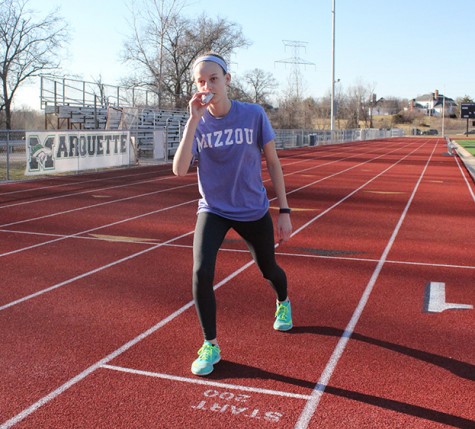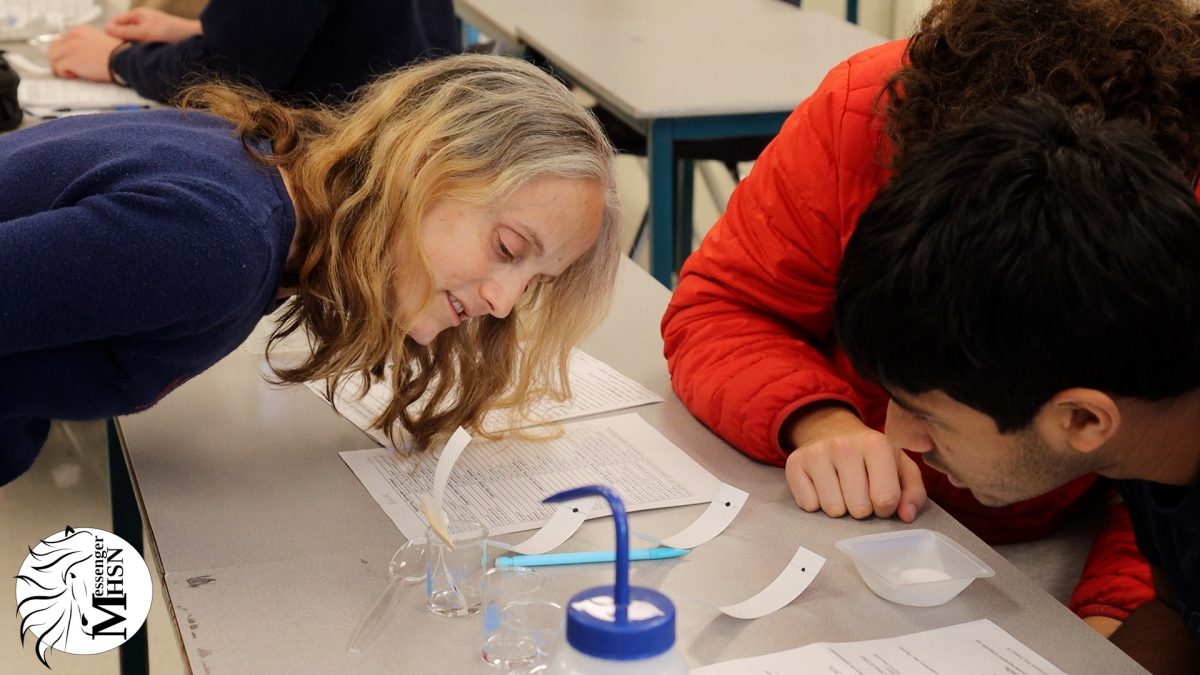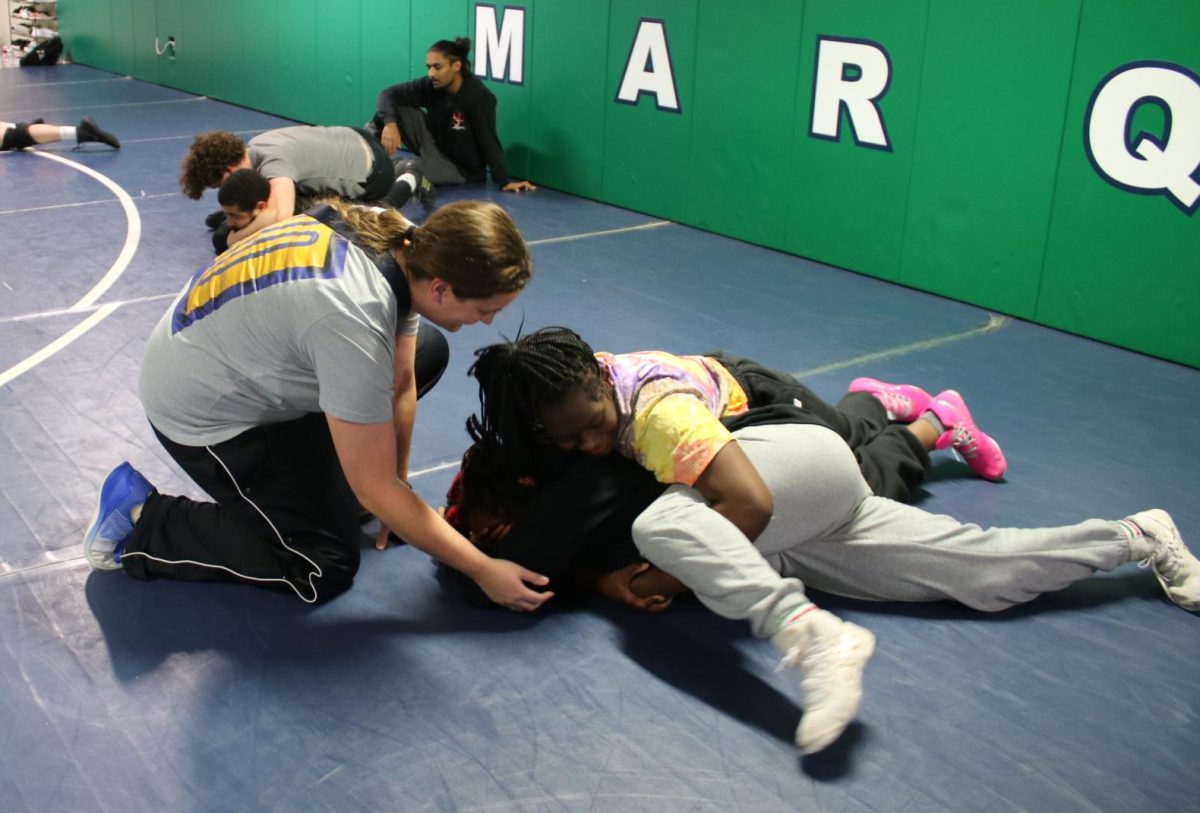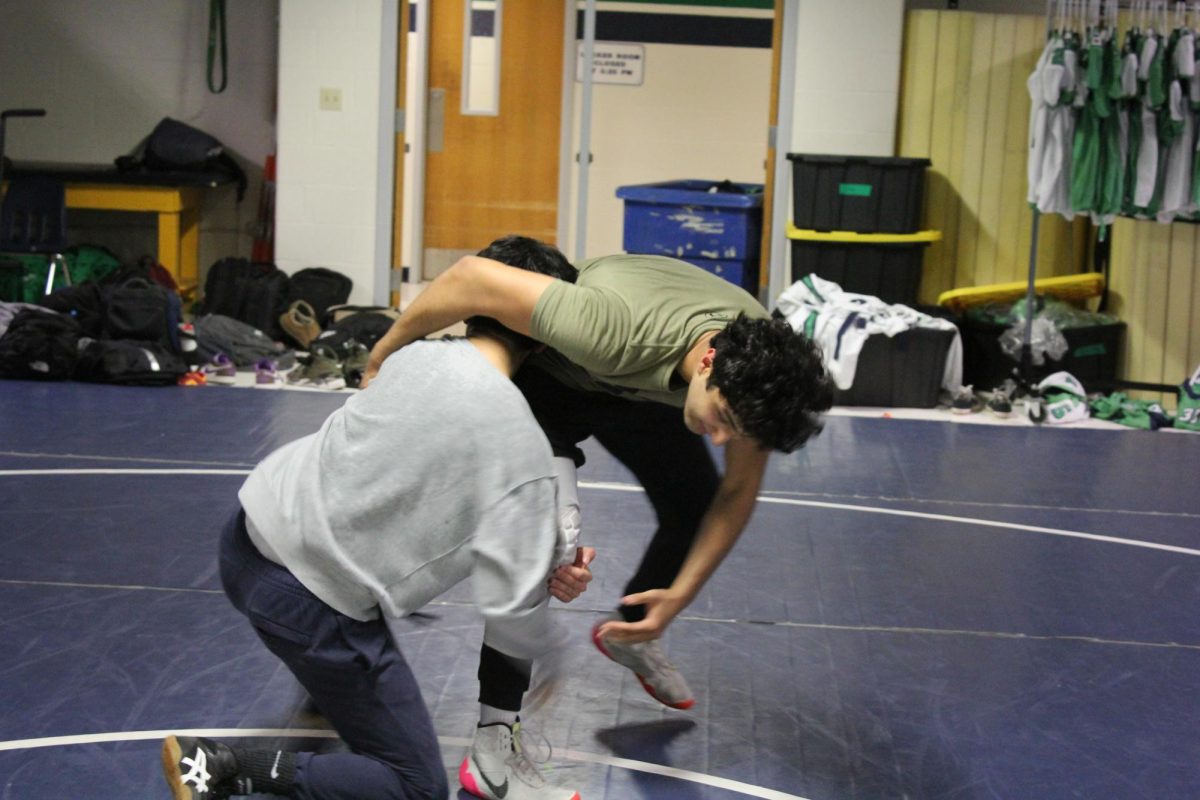Athletes attack exercise-induced asthma
February 19, 2016

Melissa Price, freshman, is one of 10 percent of teenagers who have asthma. The condition didn’t stop her from running track.
It’s time for the 400-meter relay, junior Tiffany Tannas’ third race of the day. As she steps onto the Lafayette track, she immediately senses the high amounts of mold and dust in the air. She can’t breathe. She gets light-headed and dizzy. Her asthma has been triggered.
“I couldn’t push it as hard as usual and felt like I was going to collapse at the end,” Tannas said.
Tannas was diagnosed with asthma during track season in the spring of her freshman year.
“I was having problems catching my breath after relatively easy workouts,” she said. “I then went to the doctor and received an inhaler to use every day before practice in the spring.”
Tannas became aware of her asthmatic difficulties when she ran at practices, which cover longer distances than races. She said at these trainings, she didn’t have as much time to catch her breath.
However, despite her breathing difficulties, Tannas said she tries to let her adrenaline take over during races.“It has made me stronger mentally because now I don’t think much about my weaknesses when I run, I just push past them because I know I can get through them,” she said.
While Tannas conquers her asthma on the track, Colin Schwab, junior, beats it on the soccer field.
Unlike Tannas, Schwab was diagnosed when he was born.
“I had trouble breathing and had to stay an extra two weeks in the hospital. Then when I was around five or six, I had a bad attack around Easter and had to be in the hospital for five days,” he said.
Schwab was put on several medications such as albuterol, and at his worst point, he felt weak just leaving his bed.
“I would wake up two to four times a night taking breathing treatments or nebulizers,” he said.
After many attacks and trips to the ER, Schwab decided to improve his physical fitness in addition to taking his medications.
“Besides just taking medicine and using an inhaler, you have to make yourself stronger by running,” he said.
Between his increased level of fitness and his age, Schwab said his asthma hardly affects his playing on varsity soccer or his running for track.
“I have trained myself and built a strong base within my lungs and fitness,” he said.
Dr. Ray S. Davis, professor in Pediatrics to the Division of Allergy and Immunology at Washington University, has a private practice at Allergy Consultants in Creve Coeur.
“Ninety percent of kids with asthma have exercise induced asthma if the exercise is vigorous,” Dr. Davis said.
He said exercise-induced asthma is most prevalent in kids who play sports such as long-distance running, soccer, and basketball, where they run the majority of the time.
“The most important things to do for these patients is to warm up before exercise and take their rescue inhaler preventatively at least 15 minutes before exercise,” Dr. Davis said.


















